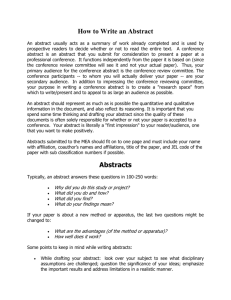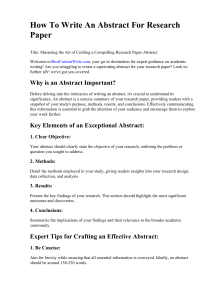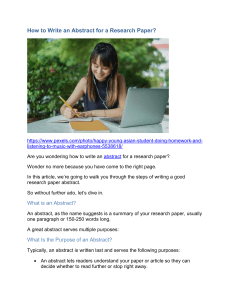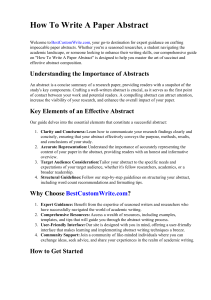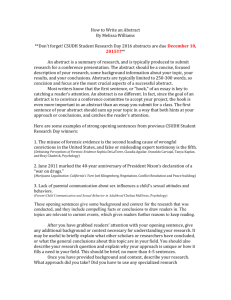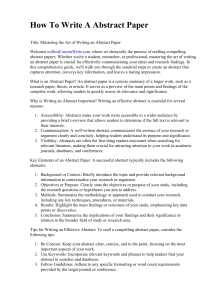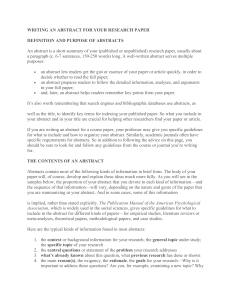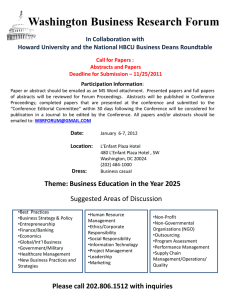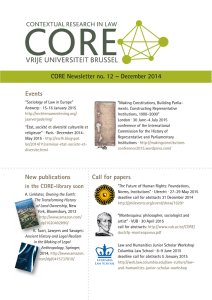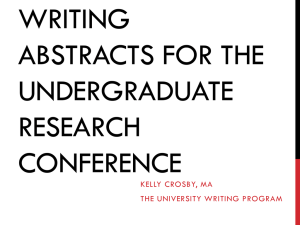Abstracts - Undergraduate Research Center
advertisement
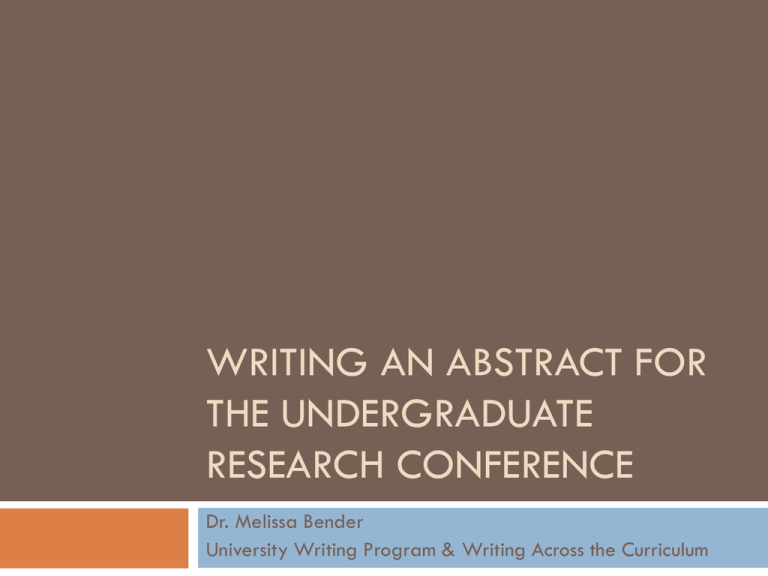
WRITING AN ABSTRACT FOR THE UNDERGRADUATE RESEARCH CONFERENCE Dr. Melissa Bender University Writing Program & Writing Across the Curriculum Abstracts Function as stand alone mini-texts giving readers a short summary of a study’s topic, methodology, and main findings. Function as screening devices, helping readers decide whether they wish to read the whole article or not. Function as previews for readers intending to read the whole article, giving them a road-map of their reading. Conference Abstracts Help the conference organizer decide if your project fits the conference criteria. Help the conference audience (faculty, administrators, peers) decide whether or not to attend your presentation. URC abstract also helps your sponsoring professor decide if your research is proceeding smoothly. Appeal to a broad audience Demonstrate your knowledge in comprehensible terms. Don’t take for granted that your reader shares your expertise. Limit technical language. Always use the full term before you refer to it by acronym. Elements of an Abstract # Element Implied Question 1. Purpose of project, identifying the area of study to which it belongs What do we know about the area of study? Why is this area of study important? 2. Research problem that motivates the project What is the problem/gap that your research addresses? Why is this problem/gap in need of address? 3. Methods/procedure/approach used to address this research problem, documents or evidence analyzed What did you actually do to get your results? What methods did you use? What documents or evidence did you analyze? 4. Conclusions reached OR what preliminary results suggest OR what research methods demonstrate What was discovered? What do the findings mean or what do the preliminary findings seem to suggest? 5. Significance of the research project What are the larger implications of your findings, especially for the problem/gap identified above? What is new to our understanding as a result of your inquiry? For C’s of Abstract Writing Complete: covers the major parts of the project. Concise: contains no excess words or unnecessary information. Clear: is readable, well organized, and not to jargon heavy. Cohesive: it flows smoothly between parts. Submitting your abstract Stick to 150-200 words. Make sure the language is understandable by a non-specialist. Have your sponsoring professor approve your abstract. Submit only one abstract. Small Group Discussion Choose one of the four sample abstracts. Match each of the sentences within the abstract with one of the five elements. Discuss which of the four strategies the writer is using to open his or her abstract.
